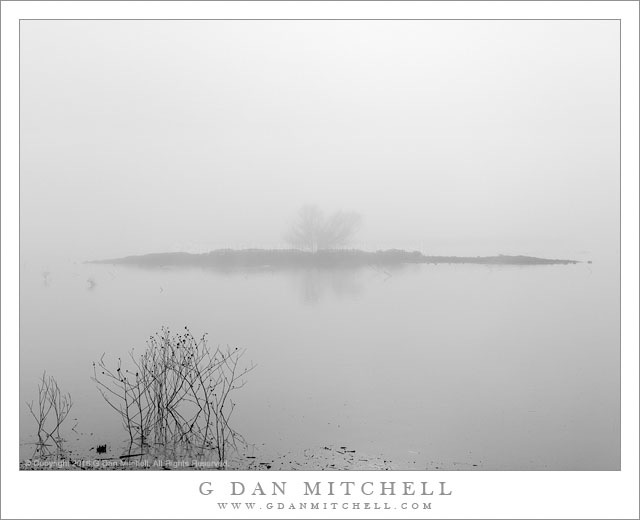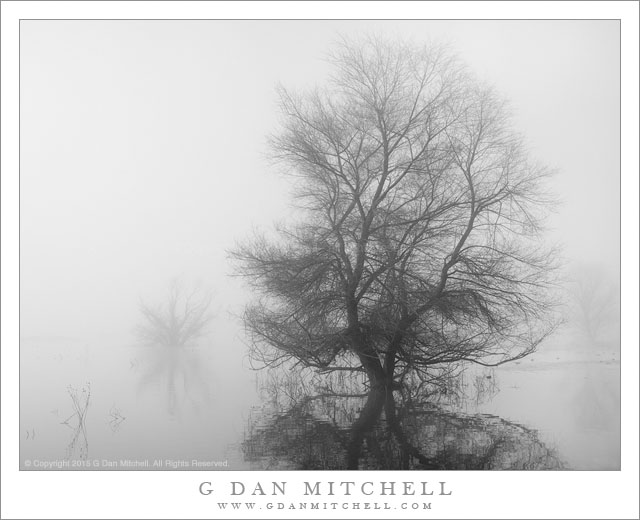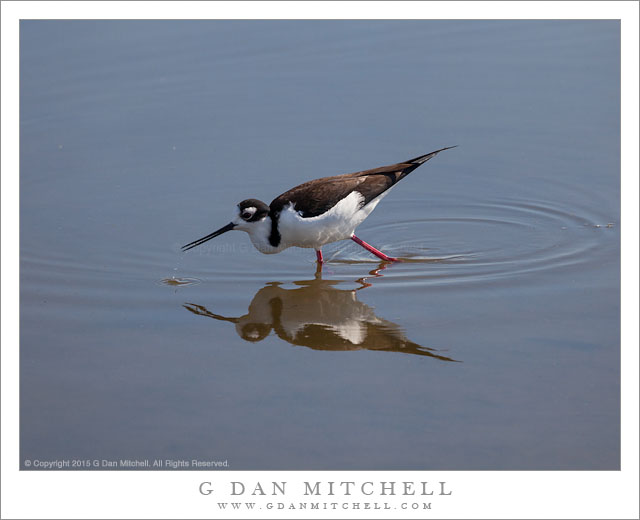
Winter Fog, Water, Island. Central Valley, California. February 15, 2016. © Copyright 2016 G Dan Mitchell – all rights reserved.
Winter fog obscures the view of a wetland island
This is one of a pair of similar photographs I made in this spot on a lovely dense fog morning out in the winter Central Valley. (The other is simpler and doesn’t include the foreground plants.) We had arrived quite a bit earlier and had already done a circuit of the gravel road that encircles the location, and we were now on our second loop. Believe it or not, the fog had become a lot less thick by the time I made the photograph!
Imagine that everything is still, but that the sounds of birds are everywhere — a combination of visual stillness but audio tumult in every direction. As I watched this little island the fog continued to thin and thicken, and at times it almost became invisible. Shortly after I made the photograph the clearing began in earnest and the beaks began to develop in the shallow tule fog.
 G Dan Mitchell is a California photographer and visual opportunist. His book, “California’s Fall Color: A Photographer’s Guide to Autumn in the Sierra” is available from Heyday Books and Amazon.
G Dan Mitchell is a California photographer and visual opportunist. His book, “California’s Fall Color: A Photographer’s Guide to Autumn in the Sierra” is available from Heyday Books and Amazon.
Blog | About | Flickr | Twitter | Facebook | Google+ | 500px.com | LinkedIn | Email
All media © Copyright G Dan Mitchell and others as indicated. Any use requires advance permission from G Dan Mitchell.



